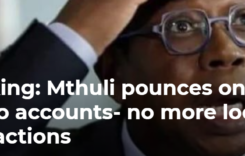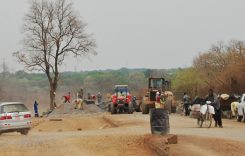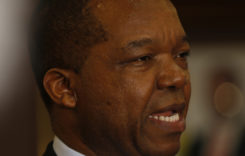Promise Check: Is government providing free education?
Claim: Government to introduce free-education next year
Source: Sunday Mail
Verdict: There has not been free education in Zimbabwe since 2019 as promised by government when the Education Amendment Act, 2020 was affected.
The Sunday Mail [23/12/2018] carried a banner headline, ‘Free education next year’ and a story headline ‘Government to introduce free education,’. The story claimed that government schools starting the year 2019 will be offering free basic education in accordance with the Education Amendment Act that came into force in March 2020.
The Education Amendment Act 2020 was adapted to align with section 75 of the constitution which provided that every citizen and permanent resident of Zimbabwe has the right to basic state funded education.
Under section 27 of the Constitution which is part of the chapter on national objectives, the state “must” take all practical measures to promote free and compulsory basic education for children.
Section 5 of the Education Amendment Bill which promotes ‘Compulsory education,’ reads …. “Every child shall be entitled to compulsory basic state funded education”, complimentary with section 27 of the Constitution, that the state ‘must take all practical measures to promote free and compulsory basic education for children. The Act places the duty on the State to progressively fund basic education within the limits of resources available.
Education in Zimbabwe:
In 1980 Zimbabwe created free and compulsory primary and secondary education, valuing education as a fundamental right. This fundamental right was clearly articulated in the Education Act of 1987.
It is however important to highlight that whilst the education system was meant to be entirely free in 1980, parents had to pay sports fees for buying equipment and material. There were also building fees for developing the schools. After the Structural Adjustment program of 1992 all goods and services were priced at market value and education ceased to be free. Rural primary schools in Zimbabwe presently cost $15 for fees per term whilst a parent will pay an average of $35 for an urban primary school child (Source: higherlifefoundation.com/the-primary-and-secondary-education-system-in-zimbabwe/
Has Zimbabwe provided free education since the Education Amendment Act was put in place?
The Education Sector Analysis Report 2020 summarises its key findings as follows:
- The 2020 Primary and Secondary Education strategic plan notes that approximately 27 percent of school-going age children fail to attend school because they cannot afford fees.
- Parents contribute approximately 96 percent of the non-salary costs to education.
- School education in Zimbabwe, as in most developing countries is financed through a three-way partnership consisting of the government, households with children involved in school, and development partners both multilateral and bi-lateral.
- Unlike most other African countries, Zimbabwe schools still charge fees, and over the past few years as the State struggled with economic uncertainty and decline, parents have taken on even more of the responsibility to support the operational costs of schools, directly through fees and charges.
- Households in Zimbabwe have been under increasing economic strain but still provide about half of all school income outside staffing costs.
- In 2020 there was a shift in the budget for MoPSE in two ways, firstly in comparative terms the budget was very much reduced, from USD 1.095 million in 2019 to equivalent USD 425 million in 2020.
- Households have been contributing more to school income and operations than the government. There are a number of ways that households contribute to school operations. Most schools have general levy which covers categories like Tuition Fees, General Purpose Fund, School Management and Sports Levy.
- Annual household contributions per learner in S1 schools are around USD 1,500 which is a considerable sum and may explain some of the observed failure to fully complete secondary schools. In rural areas the household contributions per learner are around three to four hundred US dollars per year, which probably represents an even greater burden on rural households
Diagrams below illustrate the contribution of Zimbabwe parents to education.
Percent school funding by source (EMIS)
Household school levies by grant class (EMIS)
| Level | 2016 | 2017 | 2018 | 2019 |
| P1 | 101,834,862 | 129,404,533 | 105,227,614 | 111,937,251 |
| P2 | 176,606,520 | 185,273,982 | 101,383,002 | 83,737,126 |
| P3 | 159,545,412 | 138,699,174 | 148,142,870 | 201,952,932 |
| S1 | 176,202,946 | 198,926,484 | 159,187,276 | 137,946,438 |
| S2 | 112,579,661 | 109,848,423 | 166,485,340 | 107,724,475 |
| S3 | 287,917,149 | 193,647,050 | 372,308,224 | 287,293,693 |
| All Schools | 1,014,686,549 | 955,799,645 | 1,052,734,325 | 930,591,915 |
Do you want to use our content? Click Here












